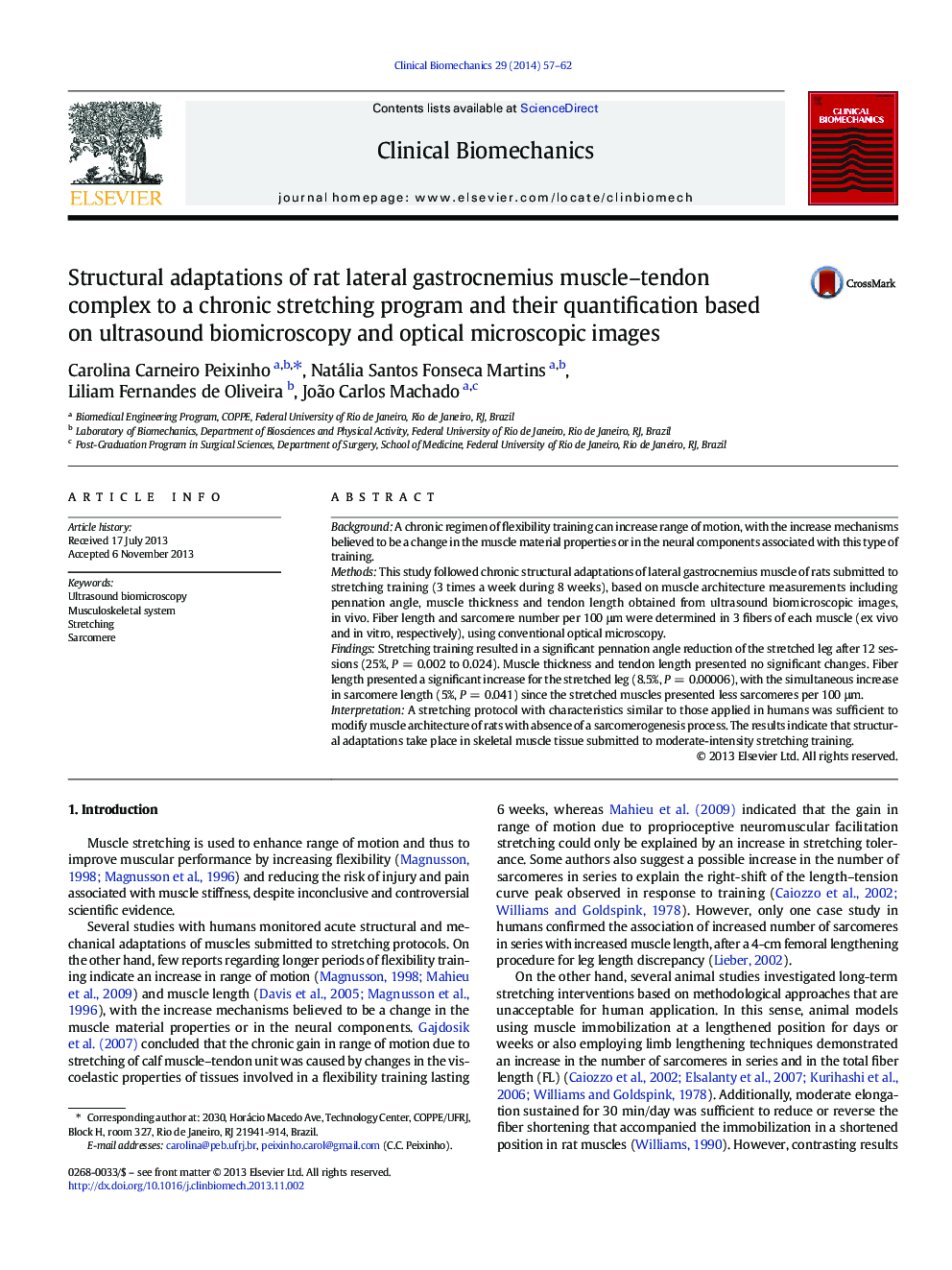| Article ID | Journal | Published Year | Pages | File Type |
|---|---|---|---|---|
| 4050413 | Clinical Biomechanics | 2014 | 6 Pages |
BackgroundA chronic regimen of flexibility training can increase range of motion, with the increase mechanisms believed to be a change in the muscle material properties or in the neural components associated with this type of training.MethodsThis study followed chronic structural adaptations of lateral gastrocnemius muscle of rats submitted to stretching training (3 times a week during 8 weeks), based on muscle architecture measurements including pennation angle, muscle thickness and tendon length obtained from ultrasound biomicroscopic images, in vivo. Fiber length and sarcomere number per 100 μm were determined in 3 fibers of each muscle (ex vivo and in vitro, respectively), using conventional optical microscopy.FindingsStretching training resulted in a significant pennation angle reduction of the stretched leg after 12 sessions (25%, P = 0.002 to 0.024). Muscle thickness and tendon length presented no significant changes. Fiber length presented a significant increase for the stretched leg (8.5%, P = 0.00006), with the simultaneous increase in sarcomere length (5%, P = 0.041) since the stretched muscles presented less sarcomeres per 100 μm.InterpretationA stretching protocol with characteristics similar to those applied in humans was sufficient to modify muscle architecture of rats with absence of a sarcomerogenesis process. The results indicate that structural adaptations take place in skeletal muscle tissue submitted to moderate-intensity stretching training.
